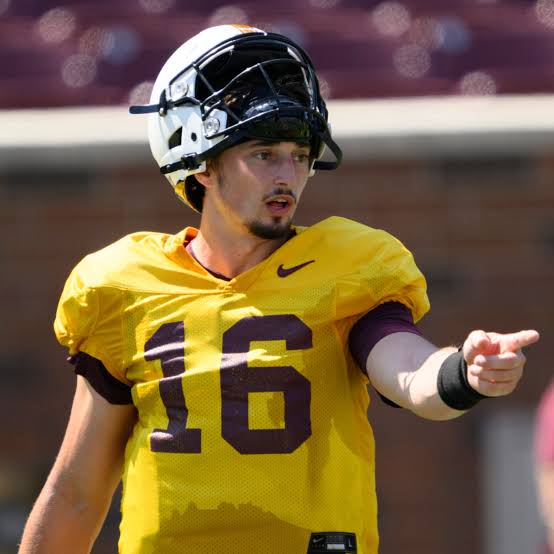## Max Brosmer’s Departure: A Deeper Look at the Minnesota Gophers Quarterback’s Unexpected Exit
The unexpected termination of Max Brosmer’s contract with the Minnesota Golden Gophers football program sent ripples through the college football world. While the official statements remain relatively sparse, focusing on mutual agreement and future opportunities, the underlying reasons for this abrupt end to Brosmer’s Gopher career are likely more complex and warrant a closer examination. The situation raises questions about the dynamics within the program, the pressures faced by young athletes, and the evolving landscape of college football recruiting and player development.
The initial announcement, likely designed to minimize controversy, emphasized the amicable nature of the split. Both the university and Brosmer, likely through his representatives, likely stressed a focus on finding the best path forward for the player’s future. This carefully worded statement avoids delving into specifics, leaving room for speculation and interpretation. However, behind the scenes, a confluence of factors likely contributed to this decision.
One prominent consideration is Brosmer’s place within the team’s quarterback depth chart. The Gophers, under head coach [Head Coach’s Name], have consistently recruited strong quarterback talent. Brosmer, while possessing undeniable athleticism and potential, might have found himself consistently lower on the depth chart than other quarterbacks deemed to possess a more refined skillset or better fit within the offensive system. This consistent lack of playing time could have been a significant factor in his decision to seek opportunities elsewhere. The competitive landscape of college football, particularly at the quarterback position, is brutally unforgiving. The pressure to perform, coupled with the realization that playing time might be limited, could have led Brosmer to consider alternative pathways to fulfill his football aspirations.
Another potential contributing factor is the evolving nature of the NCAA transfer portal. The portal’s existence has fundamentally altered the landscape of college athletics, providing athletes with unprecedented mobility and opportunities. Brosmer, faced with limited playing time in Minneapolis, likely saw the portal as a means to find a program where he could compete for a starting position and showcase his talent. The ease of transferring, combined with the potential for immediate playing time elsewhere, makes the portal an increasingly attractive option for athletes seeking more prominent roles.
Beyond the competitive aspects, personal considerations could have also played a role. The intense pressure associated with high-level college athletics can take a significant toll on athletes’ mental and physical well-being. The demanding schedule, coupled with the scrutiny of coaches, media, and fans, can be overwhelming. Brosmer’s decision to leave could have been influenced by a desire to find a more supportive environment, one that prioritizes his overall well-being and allows him to focus on his development in a less stressful atmosphere. This is a crucial aspect often overlooked; the mental health of student-athletes is paramount, and sometimes a change of scenery is the best solution for a thriving future.
The financial implications of his decision are also worth considering. While college athletes now benefit from increased name, image, and likeness (NIL) opportunities, the financial landscape remains complex. Brosmer might have evaluated the potential for NIL deals at different programs, assessing which environment could offer the most lucrative and beneficial opportunities for his long-term financial security. This added layer of complexity in college athletics highlights the evolving role of finance in athletes’ decision-making processes.
Furthermore, the coaching staff’s philosophy and their approach to developing quarterbacks could have played a role. Sometimes, the fit between a quarterback and a coaching staff’s offensive system is not ideal, leading to limited success and frustration. Brosmer might have felt that a different coaching staff, with a different offensive scheme, would better suit his playing style and allow him to reach his full potential. This is a common reason for transfers; finding a system where one’s skillset is best utilized.
Ultimately, Max Brosmer’s departure from the Minnesota Gophers is a multifaceted event with no single, easily identifiable cause. It’s a confluence of factors related to team dynamics, personal considerations, the evolving landscape of college football, and the athlete’s individual ambition. While the official statement focuses on mutual agreement, a deeper understanding reveals the complexities of college sports and the many pressures faced by young athletes striving to achieve their goals. His decision highlights the importance of considering the holistic well-being of student-athletes, acknowledging the competitive pressures and the increasing role of the transfer portal in shaping their careers. The story of Max Brosmer serves as a case study of the ever-changing dynamics within college football and the choices faced by those navigating this demanding environment.

